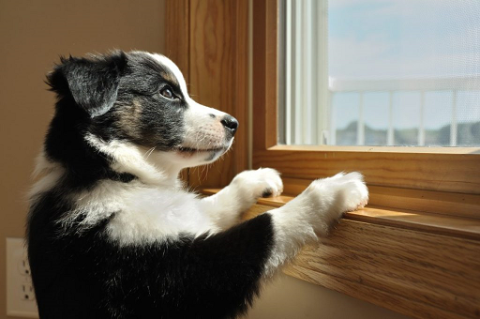Let's face it, our dogs love to be around us. All of the time! The new human need to shelter in place, work from home (if able to work at all), and limit social interactions may be your dog's idea of Utopia. If most dogs could decide, we would never go back to our pre-COVID 19 routines. But, what happens when restrictions begin to be lifted?
Dogs do best with routines. They like to have predictable structure in their days. They are most relaxed when they rise, eat, have potty breaks, go for walks, and go to bed at roughly the same time every day. For most dogs, having human family members suddenly home-bound is a fairly easy and welcome transition....kind of like a month of weekends!
When statewide isolation restrictions are lifted, all schools are back in session in person, and the house is empty all day, many dogs will exhibit signs of separation anxiety. These signs may include vocalization, destruction of toys, clothing and furniture, scratching at doors and floors, and inappropriate urination/defecation. This behavior is not a dog being mad or trying to "get back" at their family. It is actually similar to a panic attack. Punishment for this behavior is not beneficial and can even exacerbate the problem. Some dogs need anti-anxiety medication to help stabilize their behavior.
So how can we prevent this? While on COVID restrictions, it is important to allow your dog to have some relaxed alone time in the house. Have your whole family slip out the door (without giving your dog verbal or eye contact) to go for a dogless walk or drive. When you return, passively ignore your dog and act as if you were never gone. Leave TV or radio on while you are away. All of these things help to minimize the difference between you being home and the dog being alone.
When schools are back to being in person for every child and work-from-home is no longer the norm, keep practicing these minimizing separation techniques. Try to establish a new routine before your schedule changes. Consider a couple days of doggie day care per week. Do lots of physical and mental exercises with your dog.
We will all get through these strange times. We might even feel closer to our family, both two and four legged. Practicing some healthy separation now will help our dogs transition to alone time later. Cats, on the other hand might just celebrate when they have more time alone!
Written by Dr. Lori L. Elliott
